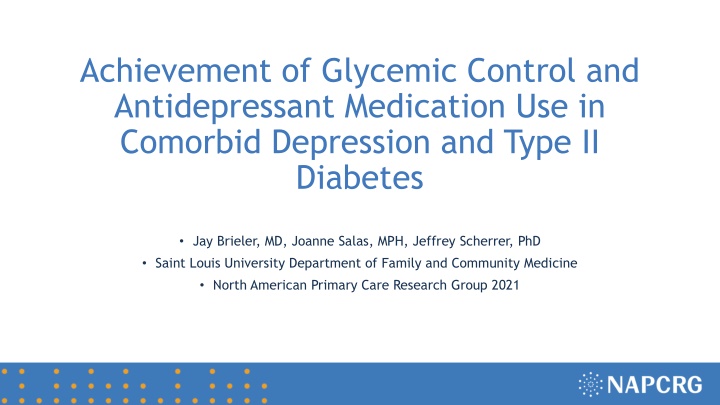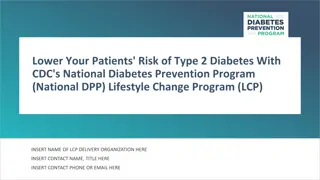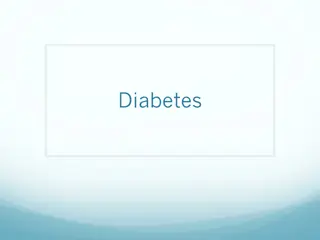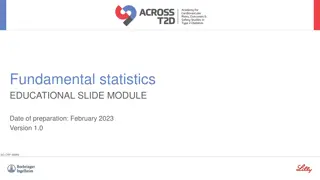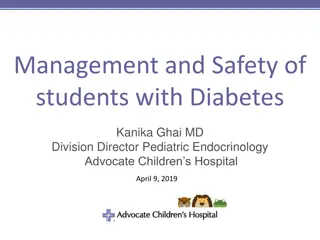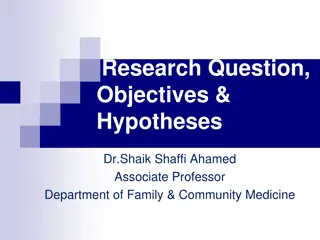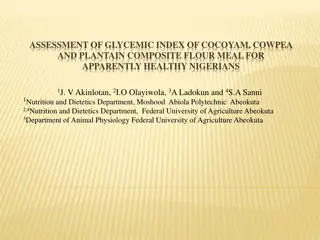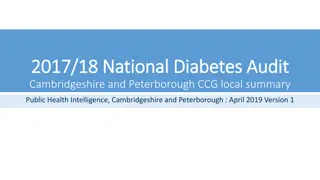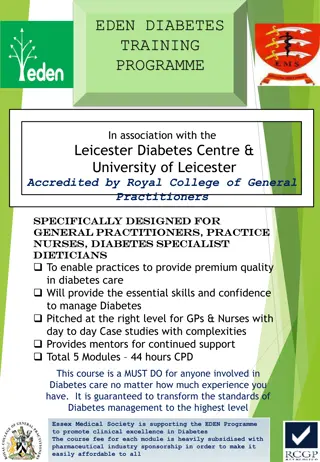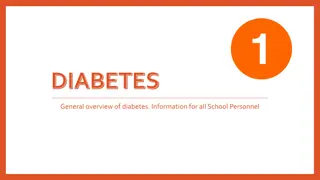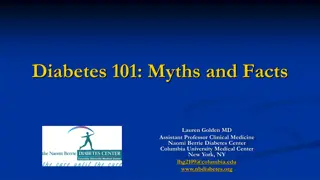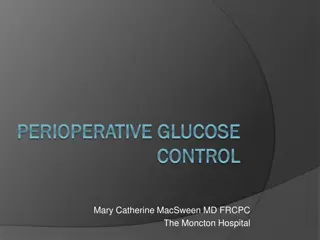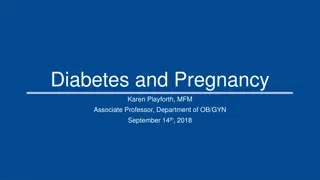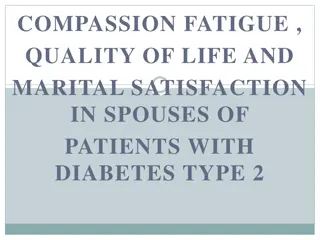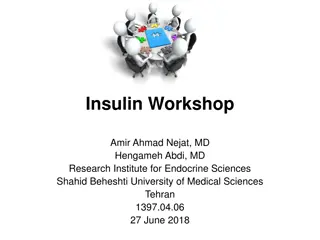Achieving Glycemic Control in Comorbid Depression and Type 2 Diabetes
This study explores the relationship between antidepressant medication use and glycemic control in patients with comorbid depression and uncontrolled type 2 diabetes. The research design, patient identification process, exposure and outcome variables, co-variates, and analysis methods are detailed to investigate the impact of adequate antidepressant treatment on achieving glycemic control.
Download Presentation

Please find below an Image/Link to download the presentation.
The content on the website is provided AS IS for your information and personal use only. It may not be sold, licensed, or shared on other websites without obtaining consent from the author.If you encounter any issues during the download, it is possible that the publisher has removed the file from their server.
You are allowed to download the files provided on this website for personal or commercial use, subject to the condition that they are used lawfully. All files are the property of their respective owners.
The content on the website is provided AS IS for your information and personal use only. It may not be sold, licensed, or shared on other websites without obtaining consent from the author.
E N D
Presentation Transcript
Achievement of Glycemic Control and Antidepressant Medication Use in Comorbid Depression and Type II Diabetes Jay Brieler, MD, Joanne Salas, MPH, Jeffrey Scherrer, PhD Saint Louis University Department of Family and Community Medicine North American Primary Care Research Group 2021
The Research Question In patients with depression who are diagnosed with uncontrolled type 2 diabetes mellitus, is treatment with anti- depressant medication associated with achievement of glycemic control?
Research Design Patient Identification Diabetic patients identified using ICD-9 and ICD-10 codes (n=374,630) Inclusion criteria for age and co-morbidity (n=142,802) 18-64 yo No Cancer or HIV Cannot have had 3 or more steroid prescriptions in previous year Diagnosis of depression at least a year prior to first DM diagnosis (n=23,487) A1c available with 3 months prior to first DM diagnosis, >7.0 (n = 9,972) Complete data set including follow-up available (n = 7,332)
Research Design Exposure and Outcome 3 level exposure variable: Adequate ADM: Prescription of ADM for >12 weeks in the year prior to DM diagnosis including >= 3 prescriptions within a 4 week period Inadequate ADM: less than 3 prescriptions in all 4 weeks periods for ADM No ADM Outcome = glycemic control at follow-up Defined as A1c < 7.0% (ADA 2015)
Research Design Co-Variates Baseline A1c Oral diabetic medication Insulin use Anxiety Disorder Hypertension Hyperlipidemia Vascular Disease Obesity Smoking history Gender Race Insurance status Volume of Health Care Utilization
Research Design Analysis A Cox proportional hazards model in unweighted and weighted data assessed the association of adequate ADM treatment and time to glycemic control, expressed with hazard ratios and 95% confidence intervals Bivariate analyses using chi-square tests for categorical variables and one-way ANOVA for continuous variables estimated the association between covariates and adequate depression treatment group. All baseline covariates and demographic factors were balanced across exposure groups using propensity scores and inverse probability treatment weighting (IPTW). Standard mean differences before and after IPTW weighting estimated effect size differences between all adequate ADM treatment group pairwise comparisons.
What the Research Found Association between antidepressant medication (ADM) group and glycemic control. Results from extended Cox Models with heaviside function (time < 36 months vs. 36 to < 72 months vs. time 72 months), crude (unweighted) and weighted Crude HR (95% CI) Weighted HR (95% CI) Observation months < 36 No ADM treatment Inadequate ADM treatment Adequate ADM treatment 1.00 1.00 1.19 (1.10-1.29) 1.29 (1.17-1.43) 1.06 (0.96-1.17) 1.17 (1.02-1.34) Observation months 36 - < 72 No ADM treatment Inadequate ADM treatment Adequate ADM treatment 1.00 1.00 1.09 (0.88-1.37) 0.77 (0.54-1.10) 1.09 (0.83-1.43) 0.78 (0.51-1.20) Observation months 72 No ADM treatment Inadequate ADM treatment Adequate ADM treatment Note: Proportional hazard assumption met in each model, p>0.20 1.00 1.00 0.82 (0.36-1.88) 0.50 (0.11-2.21) 1.02 (0.37-2.81) 0.33 (0.06-1.94)
What the Research Found In patients with depression who are subsequently diagnosed with uncontrolled type 2 diabetes mellitus, adequate treatment with antidepressant medication is associated with achievement of glycemic control within the first 36 months from diagnosis. This statistically significant effect remains after controlling for a variety of co-variates. No statistically significant effect was seen beyond 36 months.
What this means for Clinical Practice In patients with co-morbid depression and diabetes, adequate medical treatment of the depression is associated with better control of blood sugar.
